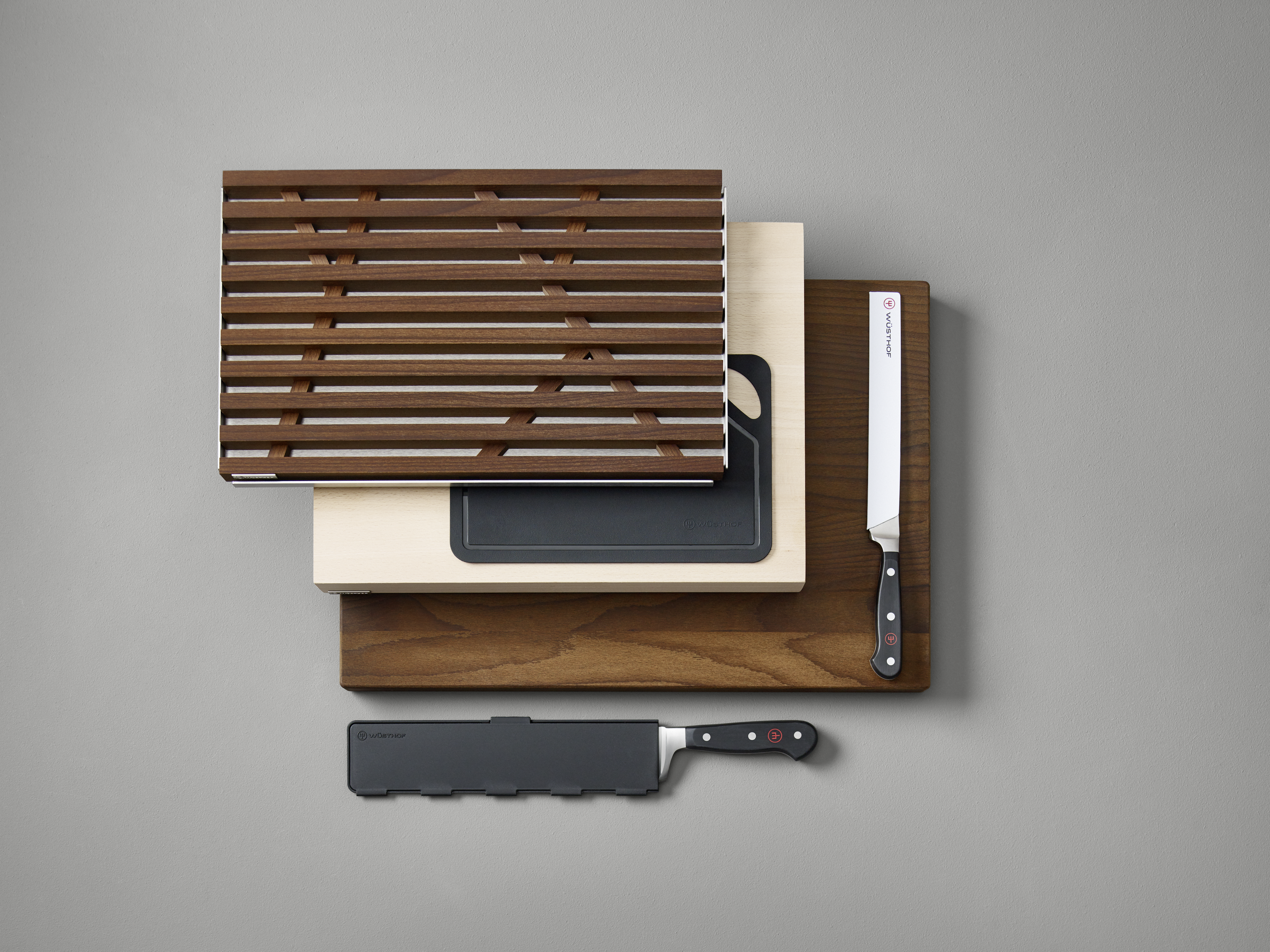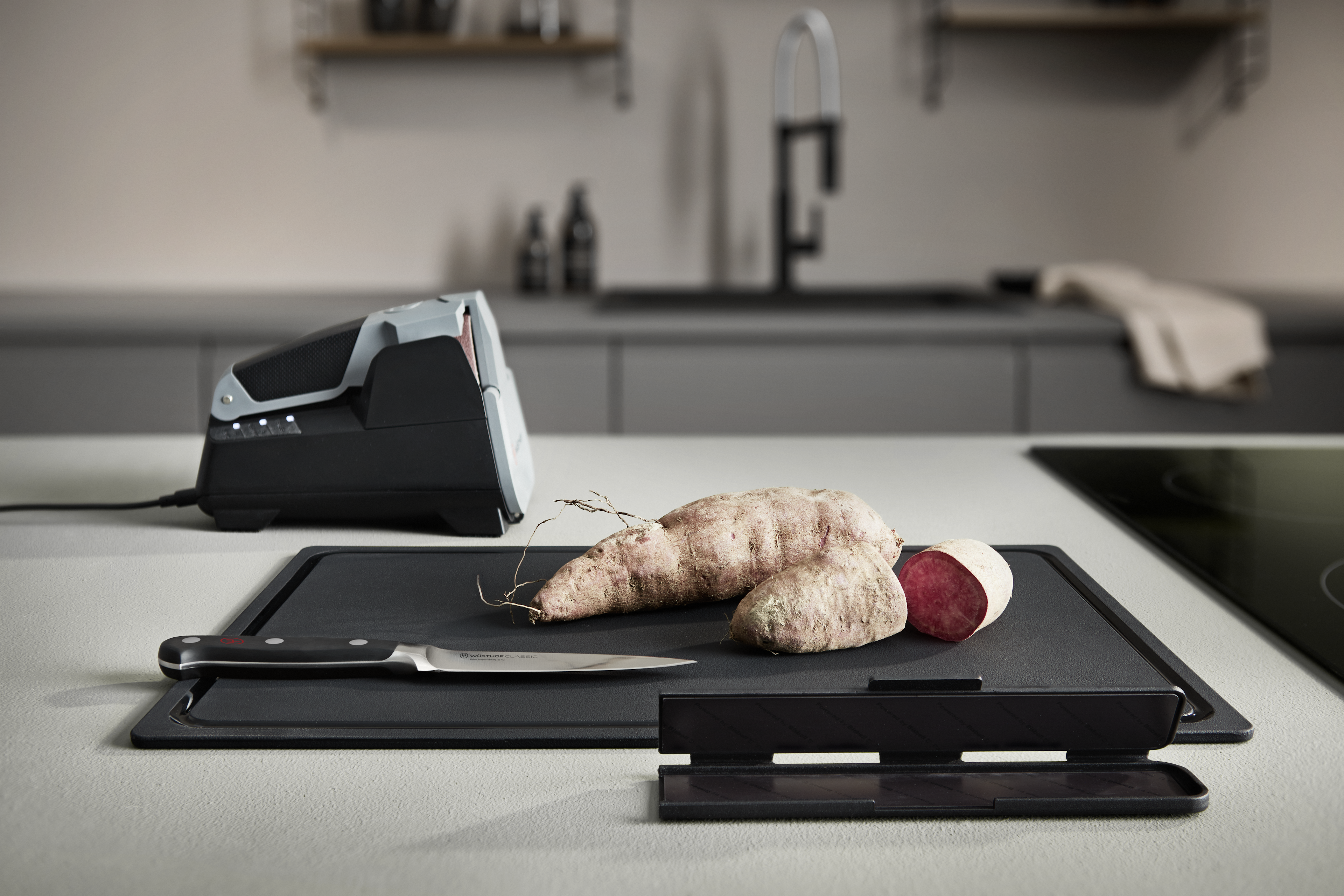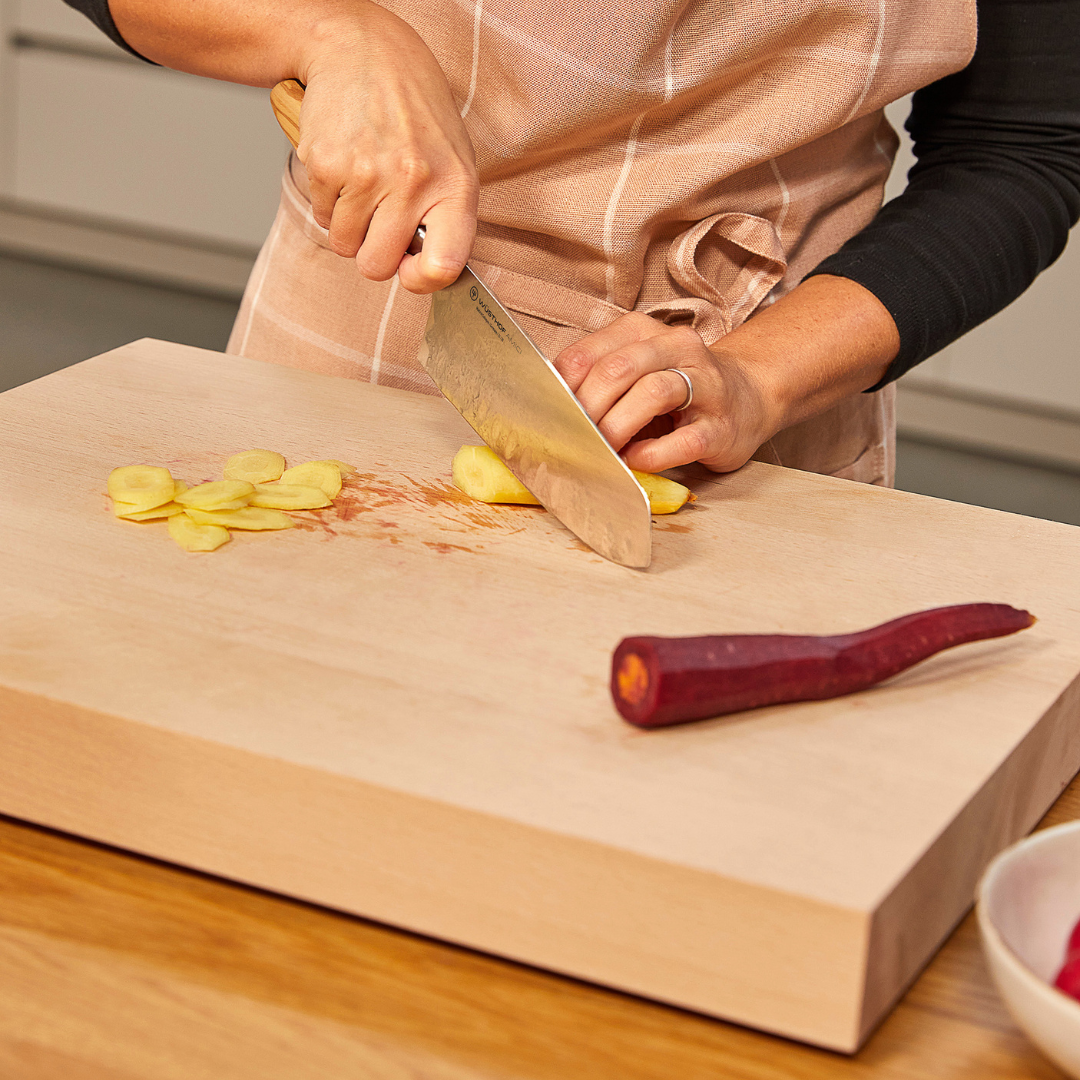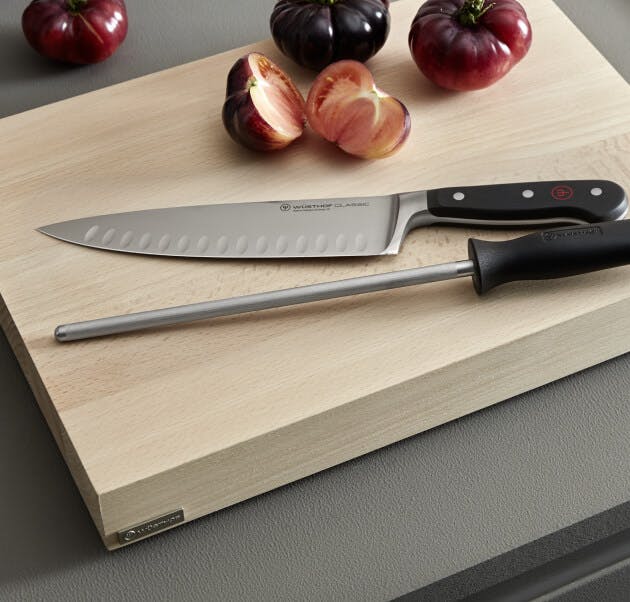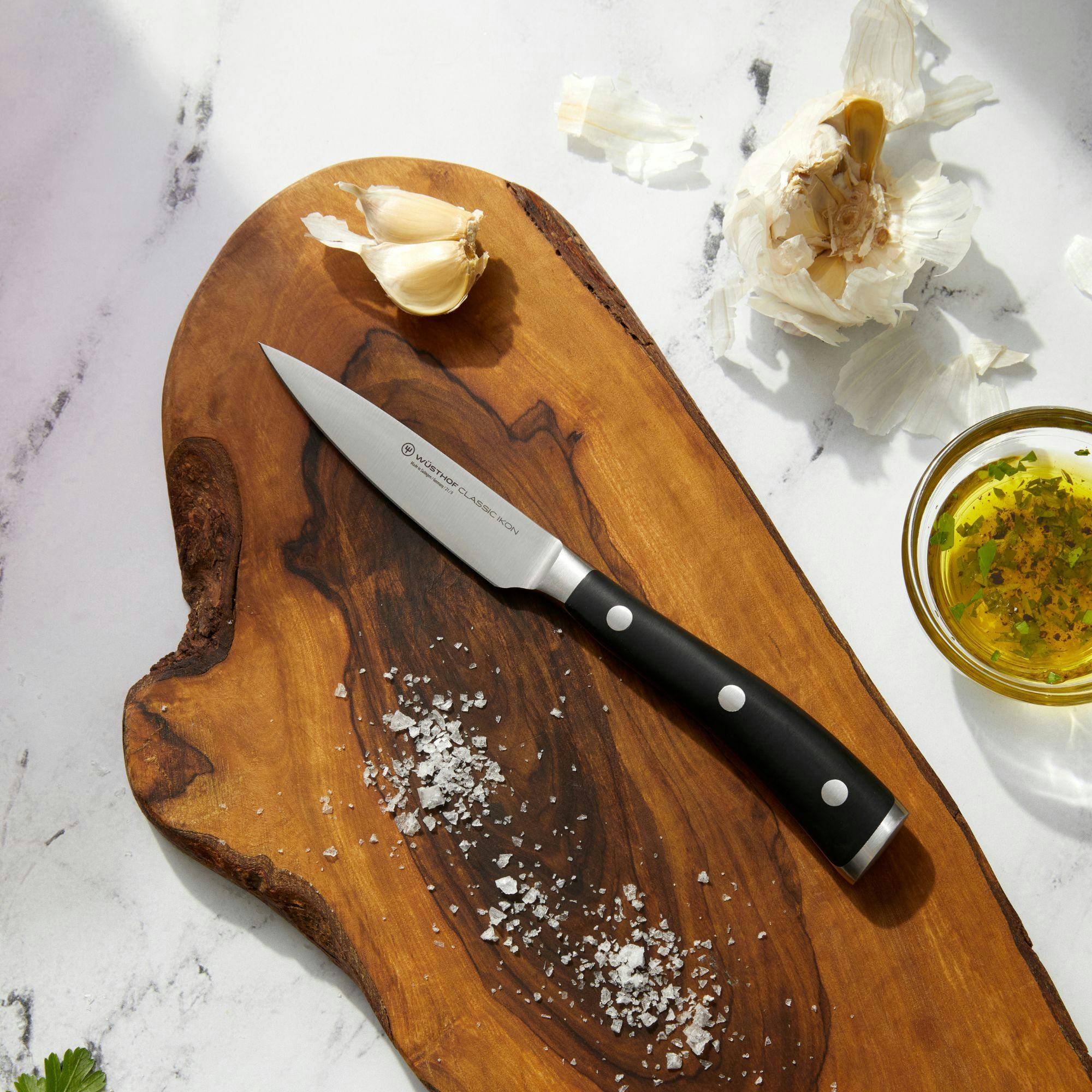You already know the safest knife in your kitchen is a sharp knife, but did you know that the most important partner for your high-quality blade is a quality cutting board? A proper cutting board provides a stable, hygienic surface for chopping, slicing, and dicing ingredients without prematurely dulling your favorite knives. However, not all cutting boards are created equal. So, how do you know which cutting board to choose? We're here to help!
How to choose - and maintain - the best cutting board for your knives
Have the Right Board for the Job
Ideally, every kitchen should have at least three cutting boards on hand. One cutting board for fruit, vegetables, and bread; one for all staining and strong-smelling foods; and one for raw meat and fish. This may seem like a lot of boards, but it's actually a best practice in food safety and will help extend the longevity of your cutting boards.
Raw meat and poultry are primary culprits for the cross-contamination of germs and bacteria — so having a designated cutting board for these items is a must.
There are three main types of cutting boards: boards made from synthetic materials (such as plastic), boards made from wood, and boards you should never use. Let's dive into the differences between these different types their ideal ingredient parings.
Wood Cutting Boards
Wooden cutting boards are ideal for slicing bread, fruit, vegetables, and other ingredients that are drier, milder, or less prone to staining. WÜSTHOF’s wooden cutting boards are made from 100% wood and come in a range of shapes and sizes. Many WÜSTHOF cutting boards go through an eco-friendly, thermo-treatment process that protects them from overuse and environmental damage. This process also makes them more water-resistant and dimensionally stable, meaning its size doesn’t change because of temperature or moisture fluctuations, while also ensuring the unique texture, natural antibacterial properties, and beautiful color of the wood are preserved. Thermo-treated beechwood also dries faster than natural wood, making it easier to maintain.
Synthetic Cutting Boards
Synthetic material cutting boards, such as WÜSTHOF’s thermoplastic polyurethane boards, are practical, hygienic, and ideal for ingredients that smell or stain (like onions, garlic, and red beets). WÜSTHOF’s plastic cutting boards are similar to their wooden counterparts in that they’re stable, antibacterial, and crucial for maintaining the quality of the knife edge. Unlike wooden cutting boards, they are dishwasher safe and capable of withstanding any temperature between 65°F and 300°F. The scratch-proof material doesn’t absorb flavors or odors, and it can be sterilized simply with freshly boiled water.
Cutting Boards to Avoid
As we mentioned above, not all cutting boards are created equal. Using cutting boards made from glass, metal, and stone can quickly dull the edge of your knife and are not secure chopping surfaces. These materials are too hard for the narrow edge of the blade, which can bend against the tough surface, making it dull within a few uses. Similarly, it is not recommended to use bamboo cutting boards as the hard material can cause expedited knife dulling faster than cutting boards made from softer wood or synthetic materials.
WÜSTHOF’s cutting boards are sturdy, gentle on your blade, and essential for preventing damage to your knives over time. Investing in quality cutting boards is one of the easiest ways to keep your knives looking and performing at their best.
Cutting Board Maintenance
Just like premium knives, quality cutting boards should be treated thoughtfully to make sure they stay functional, beautiful, and stable. Fortunately, maintenance is quite easy. TPU cutting boards can be placed in the dishwasher or sanitized using boiling water. Wooden cutting boards should be treated with a bit more consciousness. The natural tanning agents and essential oils within WÜSTHOF’s thermo-treated beechwood boards have antibacterial properties that prevent germs from taking root within the wood, which is more porous than plastic. This means our wooden cutting boards should be washed and dried by hand after each use (and should never be soaked). When washing, use warm water and a mild detergent. Dry with a clean kitchen towel and stand upright on a drying rack to let air circulate on all sides.
Finally, let’s talk cutting board TLC. If your wooden cutting board appears matte or dull, you can treat it with a bit of food-grade mineral oil or cooking oil. Just make sure your cutting board is completely dry first, then rub a thin layer of oil over the surface with a lint-free cloth and leave the wood to absorb the oil overnight. If the surface of the cutting board is heavily scratched, it can be sanded with fine-grain sandpaper before being rinsed, dried, and treated with the same oil care previously mentioned.
Pro tip: Lay a damp kitchen towel flat under your cutting board to prevent the board from sliding as you slice and dice. Just as a sharp knife is a safe knife, a stable cutting board is a safe cutting board!

